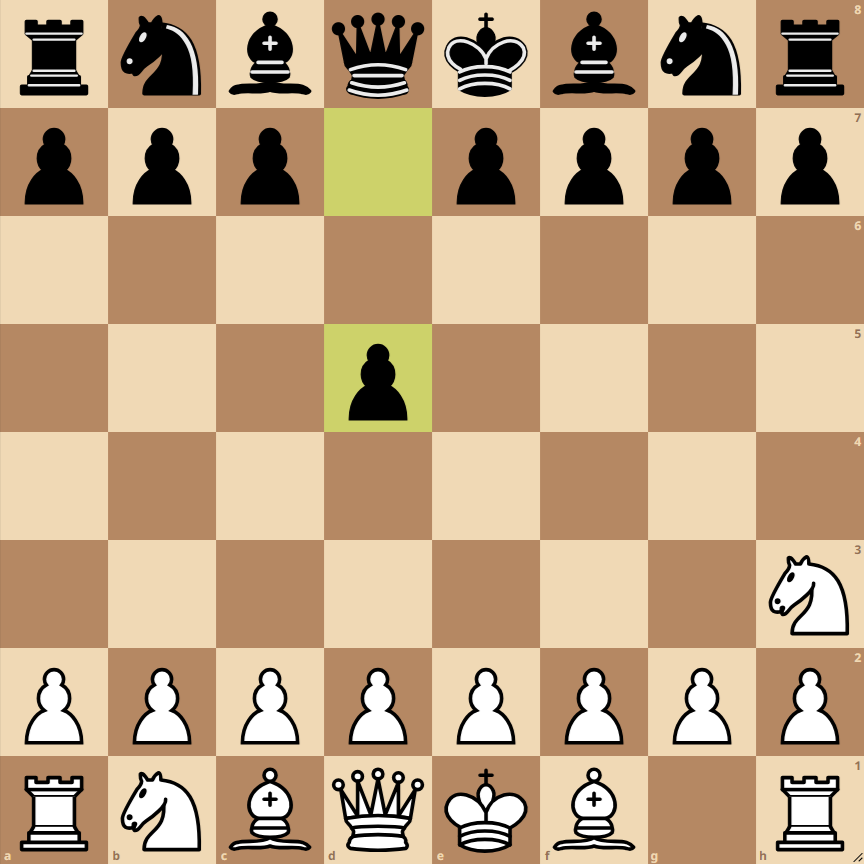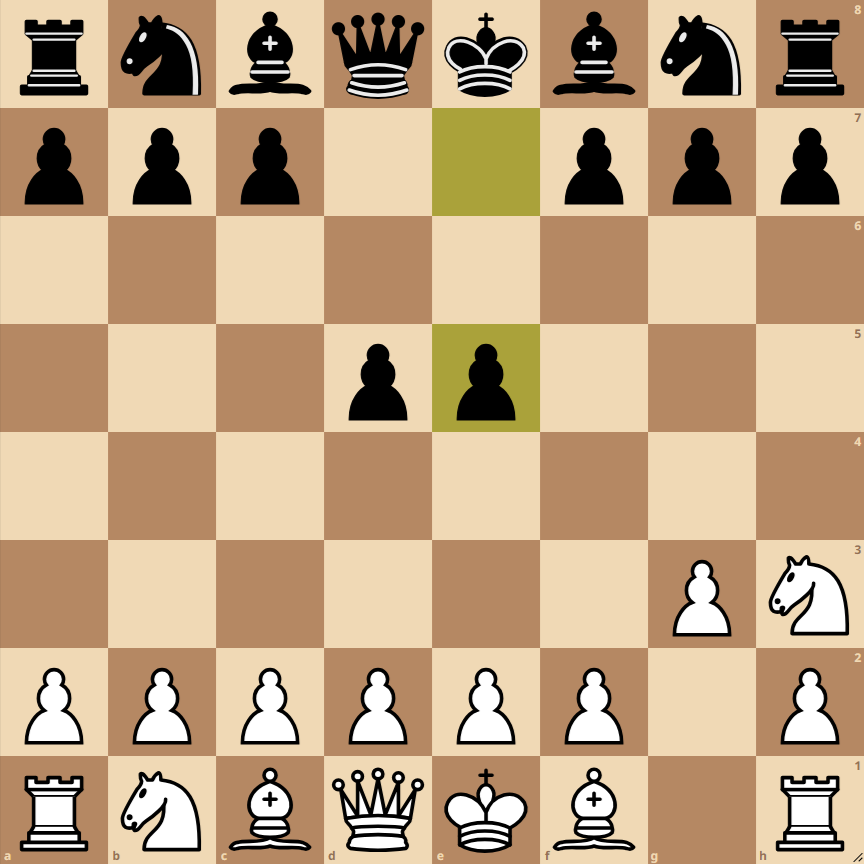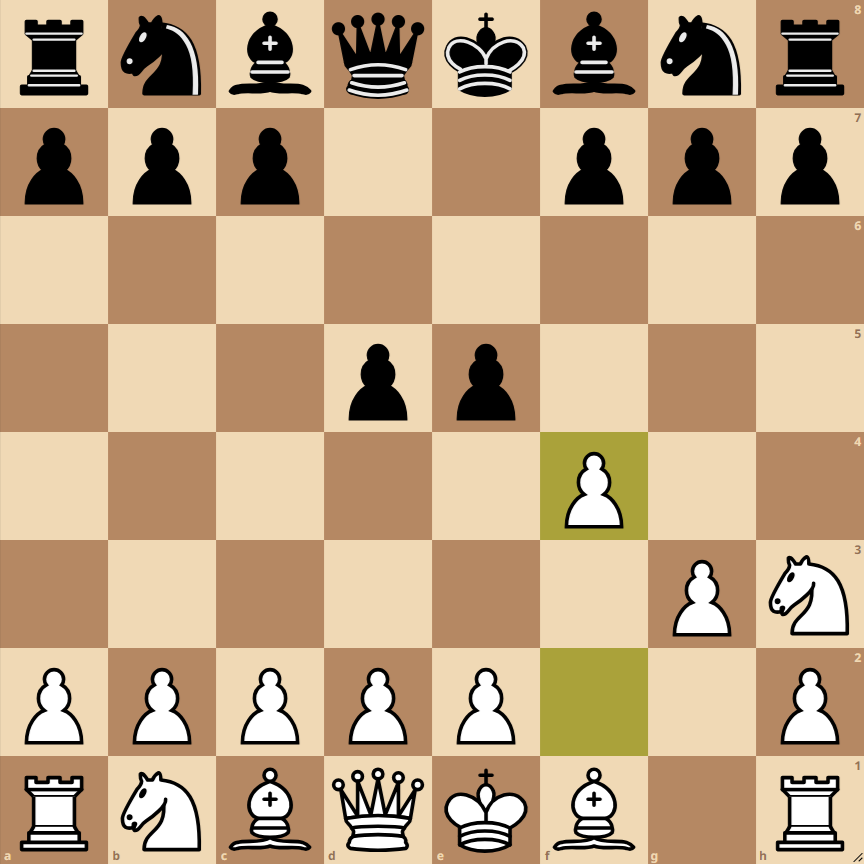How to Play the Amar Opening: Paris Gambit


The Amar Opening, specifically the Paris Gambit, begins with moves aimed at controlling the center and preparing piece development. The initial moves are outlined below:
- 1. Nh3: This knight move to h3 is unconventional. It prepares kingside castling but doesn’t immediately contribute to central control.
- 1… d5: Black responds in a classic manner by occupying the center and preparing their piece development.
- 2. g3: This move prepares the fianchetto of the bishop to g2, where it will control central squares and long diagonals.
- 2… e5: Black continues to control the center and open lines for their piece development, especially the bishop on f8.
- 3. f4: With this move, White seeks to challenge the center controlled by Black and open lines for their own development, especially the bishop on c1 and the rook on f1.
Variations of the Amar Opening: Paris Gambit
Variation 1: 3… exf4
In this variation, Black accepts the gambit. White can recapture the pawn with their bishop, opening possibilities for attack and quick development.
Variation 2: 3… e4
Black can choose to advance their pawn from e5 to e4, gaining space and limiting the development of the White knight on h3.
Variation 3: 3… Nc6
Another option for Black is to develop their knight to c6, supporting their pawn on e5 and preparing the mobilization of other pieces.
Amar Opening: Paris Gambit
Current Position:
After 1. Nh3 d5 2. g3 e5 3. f4, we find ourselves in an uncommon position originating from the Paris Gambit in the Amar Opening. This opening, characterized by unusual moves from the start, leads to an asymmetrical and tactically complex game.
Strategies and Tactics for Both Sides:
White (Amar Opening):
Strategic Objective: Develop pieces with a focus on controlling the center and preparing for a kingside attack.
Suggested Tactics:
- Expand in the center with e4, aiming to open lines and diagonals for the major pieces.
- Strengthen control of the center and prepare possible pawn advances on the kingside.
- Utilize the knight’s position on h3 for potential tactics or to support actions on the kingside.
Black:
Strategic Objective: Exploit White’s unusual pawn structure and seek counterplay in the center and queenside.
Suggested Tactics:
- Consider Axh3 to remove the knight and weaken White’s kingside pawn structure.
- Develop the knight to c6, supporting e5 and preparing further development, such as Be6 or Bd6.
- Maintain tension in the center and look for opportunities to advance d4 or f5, challenging White’s pawn structure.
Next Best Moves:
For White, e4 is an excellent choice to open the game and start fighting for central dominance. This move sets the stage for quick piece development and potential attacks.
For Black, Axh3 can be an aggressive option to disrupt White’s king’s defense and open the h-file for future actions. Alternatively, Nc6 develops another piece and supports the center, maintaining a solid structure and flexible options.
Conclusion:
This moment in the game is critical for both players, as the decisions made here will define the character of the middlegame. Whites, with their unorthodox play, should focus on consolidating their center and preparing an attack. Blacks, on the other hand, have the opportunity to challenge this structure and seek tactical advantages.

